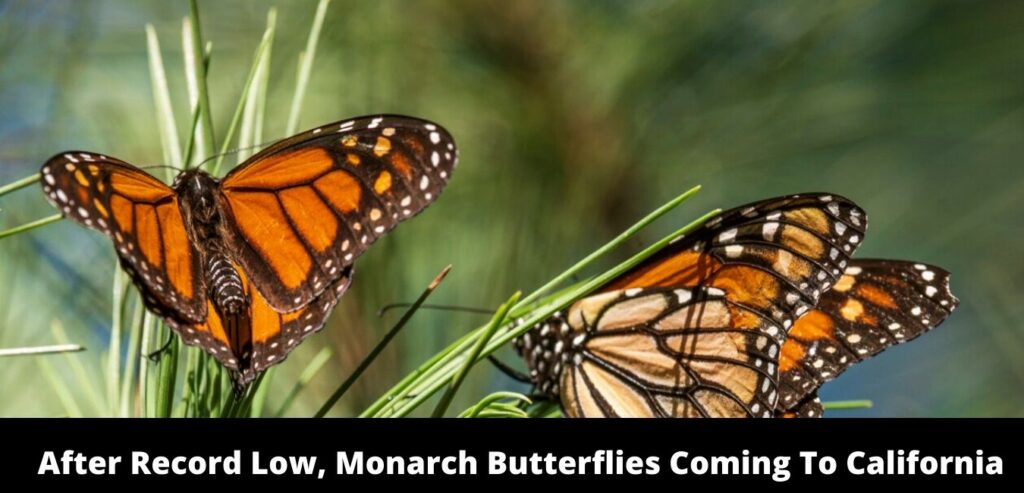The orange and black color butterfly named Western monarch maybe disappear. But there’s a hope that they are returning back.
The number of butterflies in the cold season along California’s central coast is blooming back the growth of monarchs, their presence is good for the ecosystem health, they are extended all-time low last year. Researchers point out the decline in climate change, habitat destruction, and lack of food due to the dry spell.
A yearly cold season count last year by the Xerces Society write down fewer than 2,000 butterflies, a large decrease from the tens of thousands recorded in past years and the millions that were found in the trees from Northern California’s Mendocino County to Baja California, Mexico in the south in the 1980s. Now they were found mostly in California’s central coast.
The annual count began on Saturday and will stay three weeks but now a random count by experts and volunteers tells that there are more than 50,000 monarchs at overwintering sites, said Sarina Jepsen Director of Endangered Species at Xerces Society for Invertebrate Conservation.
“This is certainly not a recovery but we’re really optimistic and just really glad that there are monarchs here and that gives us a bit of time to work toward recovery of the Western monarch migration,” Jepsen said.
Western monarch butterflies going to south from the Pacific Nothwest to California every winter, they are coming back to the same places and even on the same tress, where they gather together to keep them warm. The butterflies come in California at the starting of November and extend across the country once the hoter weather comes in March.
Monarch from over the West migrate yearly to around 100 wintering sites marking up the central California’s Pacific coast. The best wintering places is the Monarch Grove Sanctuary, no butterflies were found in the coastal city of Pacific Grove.
The south of San Francisco has worked to increase the population of monarch, this city is also known as “Butterfly Town, USA,” the city also has an event where they parade with orange and black butterfly every October. And if you mess with a monrach butterfly then you will be fined of worth $1,000.
“I don’t recall having such a bad year before and I thought they were done. They were gone. They’re not going to ever come back and sure enough, this year, boom, they landed,” said Moe Ammar, president of Pacific Grove Chamber of Commerce.
In this year a trial count indicated more than 13,000 monarch have reaches at the site in Monterey County, gathering together on pine, cypress and eucalyptus trees can bounce back the insects.
Reasearcher don’t know yet why the population increased this year, but Jepsen said that it is because of so many factor, which includes better conditions on their breeding lands.
“Climatic factors could have influenced the population. We could have gotten an influx of monarchs from the eastern U.S., which occasionally can happen, but it’s not known for sure why the population is what it is this year,” she said.
Eastern monarch butterflies go from southern Canada and the northeastern United States over thousand of miles to spend the winter season in central Mexico. Scientist evaluate the monarch’s population in the eastern U.S has decreased about 80% since the mid-1990s, the go-off in the Western U.S has been even higher.
Scientists noted down one more the effect of climate change on the monarch. Climate change is one of the main things of monarch’s lean on extinction, derange an yearly 3,000 mile migration accompany to spring and the flowering of wildflowers.
Read More: Flooding Downpours And Huge Tides Drench South Florida Roads. Cold Front To Bring Alleviation
“California has been in a drought for several years now, and they need nectar sources in order to be able to fill their bellies and be active and survive,” said Stephanie Turcotte Edenholm, a Pacific Grove Natural History Museum docent who offers guided tours of the sanctuary. “If we don’t have nectar sources and we don’t have the water that’s providing that, then that is an issue.”
Monarch butterflies absence condition and federal protection to keep to protect them from being harmed. Last year, the government has declined the federal protection but the now the insects are under the protection by the federal Endangered Species Act.
Read More: Bomb Cyclone: West Coast Weather Phenomenon Explained!!

